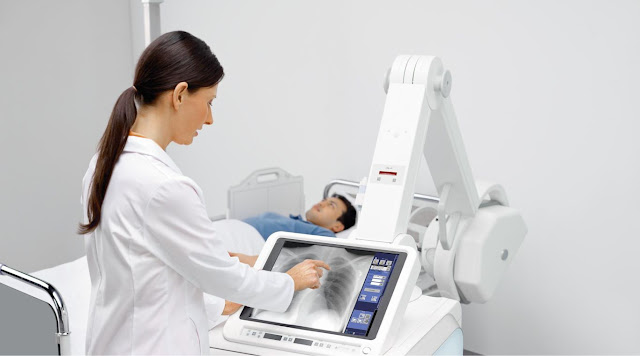Extracorporeal Shock Wave Lithotripsy Uses High-Energy Shock Waves To Break Up Kidney Stones And Fragments
 |
| Extracorporeal Shock Wave Lithotripsy |
Extracorporeal Shock Wave
Lithotripsy
(ESWL) is a noninvasive procedure
that breaks up kidney stones into smaller pieces. It is done under local,
regional or general anesthesia and is less invasive than surgery. It can be
performed in the office with a machine called a lithotripter. This is a machine
that generates shock waves and is focused on the kidney stone or stones using
X-ray or ultrasound. The shock waves break up the stones into small particles
that can pass spontaneously in urine. This treatment can significantly reduce
the need for surgical procedures. It also reduces hospital stays and costs.
Doctors
may recommend Extracorporeal
Shock Wave Lithotripsy
as part of the treatment plan in case of a large or very hard kidney stone that
is blocking the flow of urine or causing pain or severe discomfort. It can also
be used to treat smaller stones that are stuck in the ureter.
This
procedure is safe for most people, as there are some restrictions and
precautions. The procedure cannot be performed for pregnant patients as the
shock waves and X-rays could harm the fetus.
The
lithotripsy procedure is usually done by a urologist who is a medical
specialist in the urinary tract. They will recommend a treatment depending on a
number of factors, such as the size and location of kidney stone or stones, age
and general health, any other medical conditions.
Many
people experience pain when kidney stones form and then move through the
urinary tract. If the kidney stone is large or if it becomes stuck in a ureter
this can cause health problems and may require surgery to remove the stone.
Kidney stone treatment with shock wave lithotripsy can break the stones into
small pieces so they can pass through the body more easily. It can also help
reduce symptoms and prevent complications caused by the passing of kidney
stones.
During
Extracorporeal Shock Wave Lithotripsy,
the shock waves are delivered through a lithotripter that is equipped with a
coupling agent and an electrode. The lithotripter uses an electromagnetic
generator, electrohydraulic or piezoelectric, to produce shock waves. The shock
waves are delivered to the lithotripsy site through the coupling agent, which
is a medium that is acoustically similar to the body and therefore does not
interact with tissues that have a different acoustic impedance, such as stones.
Depending on the type of lithotripsy machine, shock wave generators are either
electrohydraulic or piezoelectric.
Dornier
MedTech gained approval from CE and the US FDA for their new Nautilis urology
table, in May 2022. The Nautilus has reimagined the urology table with keeping
the patients, hospitals and the urologist in mind.



Comments
Post a Comment